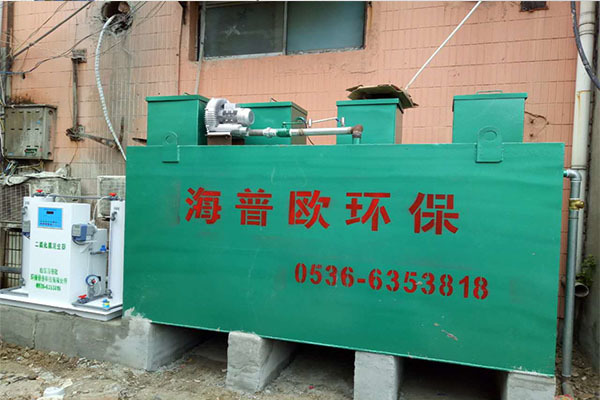News details
What is Sewage Treatment? A Comprehensive Guide to Its Definition, Processes, and Core Value
Release time:
2025-10-31 11:07
Against the backdrop of growing water scarcity and increasing concerns over environmental pollution, "what is sewage treatment" has become a key issue related to ecological protection, public health, and sustainable development. Sewage treatment is not only a core part of environmental governance but also an important means to achieve water resource recycling and ensure water security. This article will comprehensively explain the professional knowledge of sewage treatment from the perspectives of definition, treatment objects, core processes, and common technologies, helping readers gain an in-depth understanding of this environmental protection field closely related to daily life.
1. What is Sewage Treatment? Professional Definition and Core Objectives
1.1 Professional Definition of Sewage Treatment
Sewage treatment refers to the process of treating wastewater (pollutant-containing water bodies) generated from production, daily life, or natural processes using physical, chemical, biological, and other technical means. It removes harmful substances such as suspended solids, organic pollutants, heavy metals, and pathogens from water, so that the quality of the treated water meets national discharge standards (e.g., Discharge Standard of Pollutants for Municipal Wastewater Treatment Plants GB 18918-2002) or meets the requirements for reclaimed water reuse (e.g., irrigation, industrial cooling).
1.2 Three Core Objectives of Sewage Treatment
- Protect the water environment: Prevent untreated wastewater from being directly discharged into rivers, lakes, and seas, reduce pollution problems such as water eutrophication and black and odorous water bodies, and maintain the balance of aquatic ecosystems.
- Save water resources: Realize wastewater recycling through advanced treatment to alleviate the pressure of freshwater shortage, which is especially applicable to water-scarce areas or water-intensive industries (e.g., iron and steel, chemical industry).
- Safeguard human health: Remove pathogens (e.g., bacteria, viruses) and toxic and harmful substances (e.g., heavy metals, persistent organic compounds) from wastewater to prevent contamination of drinking water sources or harm to human health through the food chain.
2. Treatment Objects of Sewage Treatment: Which Types of Wastewater Need Treatment?
Clarifying the treatment objects is a key prerequisite for understanding "what is sewage treatment". Wastewater from different sources has significant differences in pollutant composition, and the treatment processes also need to be designed accordingly. Common treatment objects are mainly divided into three categories:
| Wastewater Type | Main Sources | Core Pollutants | Treatment Priority |
|---|---|---|---|
| Domestic Sewage | Residential buildings, commercial premises, public facilities (e.g., schools, hospitals) | Organic matter (e.g., COD, BOD), suspended solids, nitrogen and phosphorus, pathogens | High (directly affects people's livelihood) |
| Industrial Wastewater | Manufacturing industry (e.g., chemical, printing and dyeing, electroplating), energy industry (e.g., power plants) | Heavy metals (e.g., chromium, mercury), refractory organic matter, acid-base substances, toxic compounds | Extremely high (high pollution intensity, long-lasting harm) |
| Agricultural Wastewater | Farmland irrigation tailwater, livestock and poultry breeding wastewater, aquaculture drainage | Nitrogen and phosphorus (fertilizer residues), organic matter (feces), pesticide residues | Medium-high (easily causes water eutrophication) |
3. Basic Process of Sewage Treatment: 4 Core Stages from "Dirty Water" to "Up-to-Standard Water"
Sewage treatment follows the logic of "gradually removing pollutants" and is usually divided into four stages: pretreatment, primary treatment, secondary treatment, and advanced treatment. The treatment objectives and processes of different stages vary significantly.

3.1 Pretreatment: Remove Coarse Impurities and Protect Subsequent Equipment
- Core objective: Intercept large solid substances (e.g., plastic bags, branches) and gravel in wastewater to avoid clogging pipelines or damaging water pumps and reactors.
- Key processes: Grilles (physical interception), grit chambers (gravity separation of gravel), and equalization tanks (balance water quality and quantity to avoid impacting subsequent processes).
3.2 Primary Treatment: Remove Suspended Solids and Part of Organic Matter
- Core objective: Remove suspended particles (e.g., sediment, fibers) from wastewater through physical sedimentation to reduce the load of subsequent treatment.
- Key process: Primary sedimentation tanks (gravity sedimentation), which can remove approximately 30%-50% of suspended solids and 10%-20% of organic matter (BOD). The treated water still fails to meet the discharge standards and requires further treatment.
3.3 Secondary Treatment: Degrade Organic Pollutants, the Core Purification Stage
- Core objective: Deeply degrade organic matter, nitrogen, phosphorus, and other pollutants in water through biological reactions (or chemical oxidation), which is the "core link" of sewage treatment.
- Key processes:
- Biological treatment (mainstream technology): Activated sludge process, biofilm process (e.g., biological aerated filter), which uses microorganisms (bacteria, fungi) to decompose organic matter.
- Chemical treatment (auxiliary): Applicable to refractory industrial wastewater, such as adding oxidants (ozone, hydrogen peroxide) to oxidize organic matter.
- Treatment effect: It can remove 80%-90% of organic matter (BOD) and 70%-80% of suspended solids. Most domestic sewage can meet the discharge standards after secondary treatment.
3.4 Advanced Treatment: Meet Reuse or Strict Discharge Standards
- Core objective: Remove trace pollutants (e.g., nitrogen, phosphorus, heavy metals, trace organic matter) remaining after secondary treatment, so that the water quality meets the reclaimed water reuse standards (e.g., The Quality of Reclaimed Water for Industrial Uses GB/T 19923-2005).
- Key processes: Filtration (quartz sand filter, membrane filtration), disinfection (ultraviolet, chlorine disinfection), nitrogen and phosphorus removal (chemical precipitation, biological nitrogen removal), and advanced oxidation (treatment of trace toxic substances).
4. Common Technologies for Sewage Treatment: Three Major Technology Systems (Physical, Chemical, Biological)
Different treatment stages rely on different technologies. The three major technology systems each have their own advantages, and they are often "combined" in practical applications to achieve the best results.

4.1 Physical Treatment Technology: Low Cost, No Secondary Pollution
- Principle: Separate pollutants using physical effects (gravity, centrifugation, filtration) without changing the chemical properties of pollutants.
- Typical processes: Sedimentation, filtration, centrifugal separation, and air flotation (removal of light suspended particles), mainly used in pretreatment and primary treatment.
4.2 Chemical Treatment Technology: Strong Targeting, Applicable to Refractory Pollutants
- Principle: Convert pollutants into harmless substances or easily separable solids through chemical reactions (redox, neutralization, precipitation).
- Typical processes:
- Neutralization treatment (adjust the pH value of acid-base wastewater).
- Chemical precipitation (add lime, sulfides to remove heavy metals).
- Advanced oxidation (treatment of refractory organic matter such as pesticides and antibiotics).
4.3 Biological Treatment Technology: Environmentally Friendly and Efficient, Mainstream Treatment Method
- Principle: Use the metabolic function of microorganisms to convert organic matter into carbon dioxide, water, and harmless biomass (e.g., sludge). It is the core technology for treating domestic sewage and low-concentration industrial wastewater.
- Typical processes:
- Aerobic biological treatment (requires aeration, e.g., activated sludge process).
- Anaerobic biological treatment (no aeration required, applicable to high-concentration organic wastewater such as livestock and poultry breeding wastewater, and can produce biogas for energy recovery).
5. Important Significance and Future Trends of Sewage Treatment
To understand "what is sewage treatment", it is more necessary to recognize its underlying social and ecological value. With the tightening of environmental protection policies (e.g., "dual carbon" goals, Yangtze River Protection Law) and technological upgrading, sewage treatment is transitioning from "up-to-standard discharge" to "resource utilization".
- Resource utilization trend: The proportion of reclaimed water reuse is increasing, and sludge is used for landscaping and building material production after harmless treatment to realize "turning waste into treasure".
- Intelligent trend: Use the Internet of Things and big data to monitor water quality and optimize process parameters, reducing operating costs (e.g., intelligent aeration systems).
- Low-carbon trend: Promote technologies such as anaerobic digestion for biogas production and photovoltaic power supply to reduce energy consumption and carbon emissions in the sewage treatment process.
Conclusion
In summary, sewage treatment is not simply "filtering dirty water" but a systematic project that combines physical, chemical, and biological technologies and is designed for different types of wastewater. Its core is to "remove pollutants, protect the water environment, and realize water resource recycling". From domestic sewage to industrial wastewater, from pretreatment to advanced reuse, sewage treatment runs through the entire process of ecological protection and people's livelihood security, and it is also an important support for achieving sustainable development.
Pre
Related news
Contact: +86 18016210178 (Ms.Liu)
Add:No.56, Donghuan Road, Zhucheng City, Weifang City, Shandong Province











